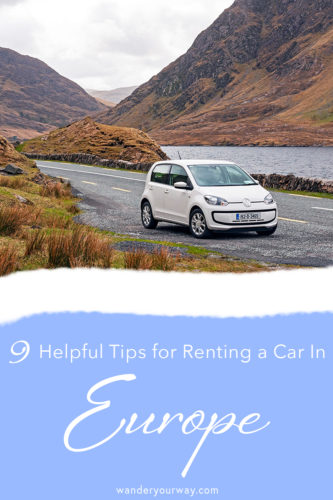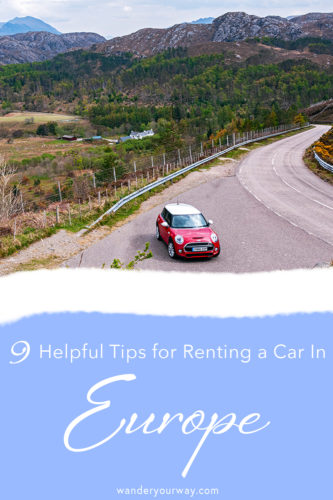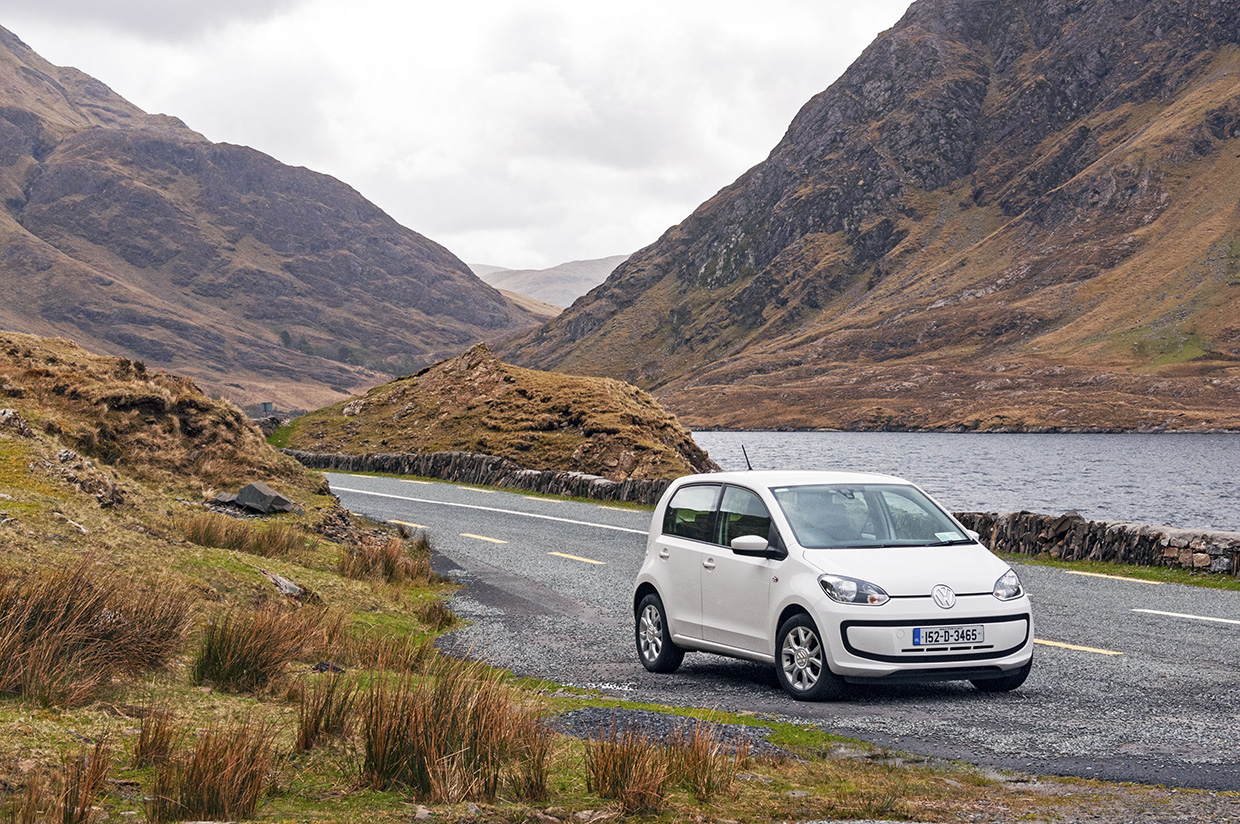9 Helpful Tips for Renting a Car in Europe
Renting a car in Europe may seem a bit daunting.
But it doesn’t have to be.
Yes, there is really good public transportation throughout a lot of Europe.
However there are some countries or regions where the trains or busses aren’t so good.
So hiring a car might be a better option.
If you do decide to rent a car then read on.
Because I have some great tips for renting a car in Europe.
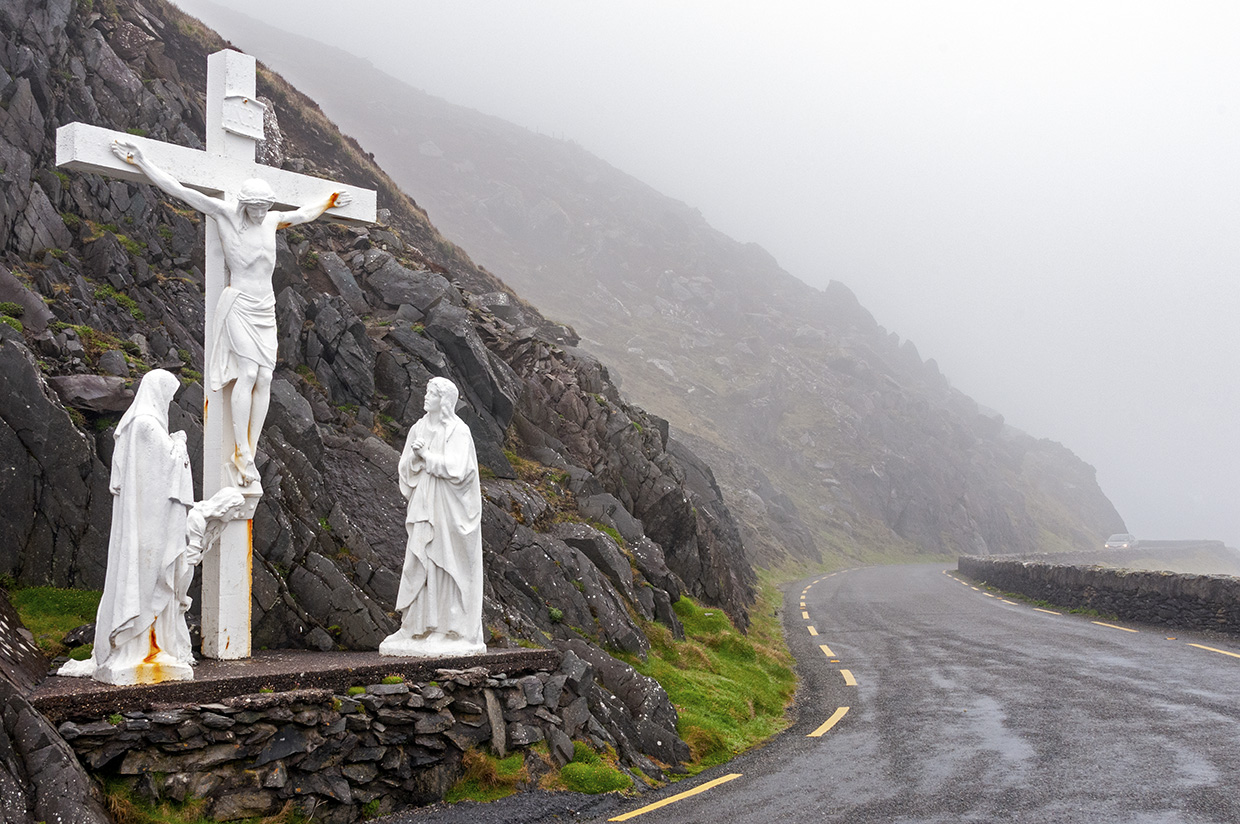
#1 Rent the smallest car possible
This is so difficult for Americans as we are used to our big cars and SUV’s.
Renting a car in Europe equals renting the smallest car you can get away with AND it means not overpacking — especially if you’re traveling with other people.
I can’t stress this enough.
Most folks have fairly small cars in all of Europe.
Although I have seen more SUV-type vehicles in the past few years.
Roads tend to be narrower and parking areas are definitely smaller.
So rent a small car — and pack light!!!!
Notice all those exclamation points.
They are there with good reason.
Here are a couple of stories for you.
I had some clients upgrade to a larger car once in Italy, specifically Sicily.
They ended up with an SUV.
And they regretted it.
It was simply too big of a vehicle for the small town they were staying in and the little roads they were driving around.
And they felt pretty conspicuous.
I also chatted with a young American couple in Ireland in 2018.
They were upgraded to a larger car, a small SUV I think.
After driving a bit out of Dublin, they turned around and returned it, opting to go back to the small car they had originally reserved.
They were not comfortable on the wee roads in that larger vehicle.
Smart move!
And a small car not only means you’ll spend less on the car hire itself, but it also means you’ll get better fuel economy.
And petrol (gasoline) is more expensive in Europe.
So your wallet will thank you for the small car too.
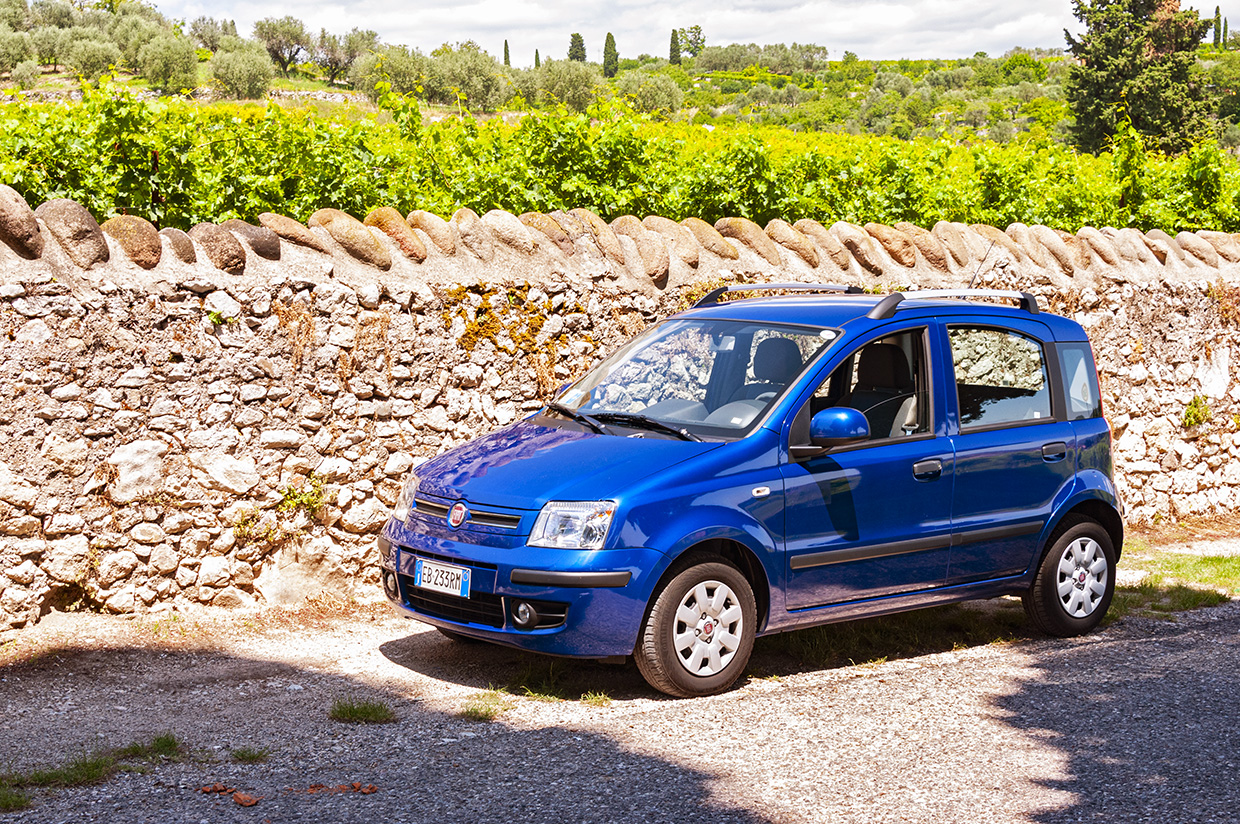
#2 Rent a manual — if you can drive one
If you know how to drive a manual or standard transmission — a stick shift — then rent a standard versus an automatic.
First of all, this will help on that fuel economy and save you money at the gas pump.
Secondly, it’s cheaper to rent a manual transmission than an automatic transmission.
However if you are not comfortable driving a manual or don’t know how, then pay the extra for the automatic.
It will be money well spent to give you that peace of mind.
Just know it will cost more.
Renting a car in Europe can be pricey, but there are ways to save.
And renting a manual is a good way to save quite a bit of money.

#3 Do get insurance — preferably the zero deductible and add on windshield and tires
So this is where renting a car in Europe can cost a bit more.
However, the peace of mind is worth it.
Unless you have a credit card that has good coverage — and do check and double check on this because not all countries are covered — then you want to buy insurance.
There are options with having a deductible — which means if anything happens you need to pay that first €1000 — or going with a 0 deductible which is the way I go.
It’s more expensive, but I don’t have to pay that deductible should someone hit me.
Anything can happen.
And having things like windshields and tires covered is a good idea too.
On my last trip to Italy there was a chip in the windshield.
But I was covered (thankfully)!
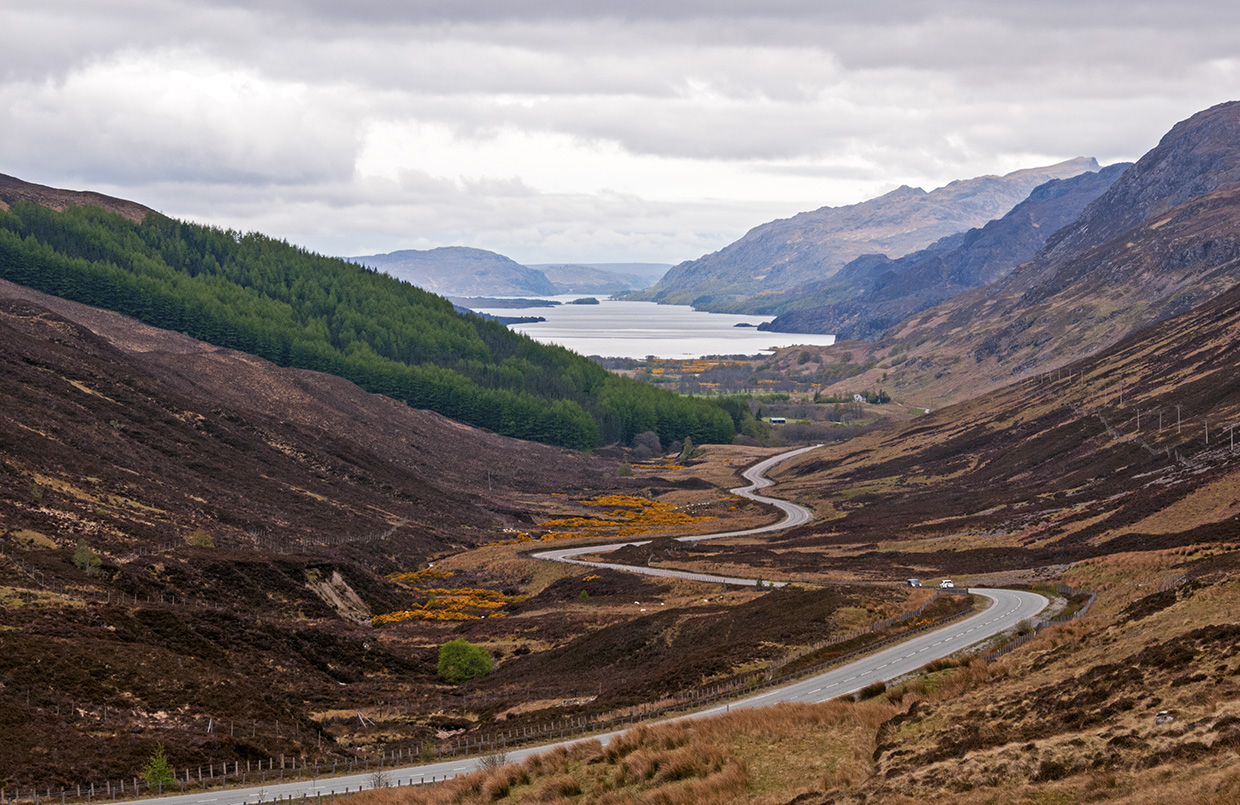
#4 Know the rules of the road
Are you allowed to talk on your cell phone as you drive?
What are some of the basic speed limits?
There are sections in some guidebooks for this — for instance the Lonely Planet guides typically have a page or 2 in the back of the book on driving.
You’ll also find information online.
Or you can check with your personal travel planner.
She’s always ready to help!
Do a bit of homework before you get those keys to your rental car.
Renting a car in Europe means you need to be a responsible driver.
So know the basic rules of the road.


#5 Do get an international driver’s license
Now there are a few countries where this is not necessary — Ireland and the UK are a couple that come to mind.
And in most cases your US or Canadian license will suffice in booking and picking up the car.
However if you do get pulled over for some reason, the international license may be needed in countries such as Germany, Italy, Spain and Croatia, just to name a few.
My advice is to go ahead and get one.
You can buy one at AAA (American Automobile Association) or the Canadian equivalent, CAA.
It’s not costly at around $25 and well worth it.
The license is good for 1 year.
And you don’t have to be a member.
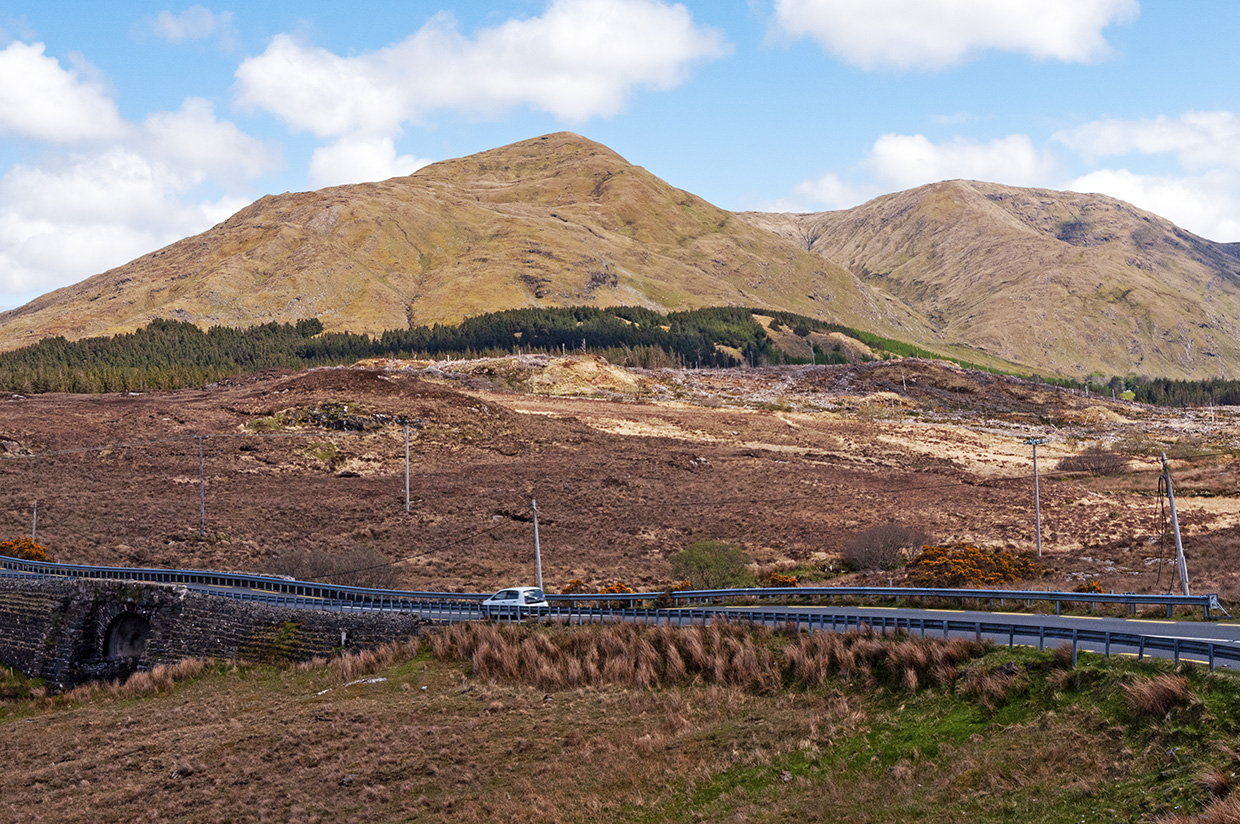
#6 Be sure to have the rental car folks show you how to work some features on the car
I have found that the car rental personnel do a pretty good job of showing you the basics on how to operate the car in both Ireland and Scotland.
Italy is another story!
But if they don’t show you, then simply ask them to point out things like how to put the car in reverse (for manual transmissions), where the lights are, where the windshield wipers are and how to get the key out of the ignition — because sometimes there’s a hidden button.
Also ask where the fuel tank is and how to access it.
Sometimes there’s a key or some other trick or lever.
Ask the car rental folks if there is anything quirky about driving this particular car.
It’s their job so don’t be afraid to ask.
And if need be, sit in the parking spot for a while to find out where everything is on the car.
I did this in Scotland as the car had more bells and whistles on it than I was used to.
Renting a car in Europe can be a bit overwhelming.
Don’t be in a rush because driving in Europe in a car you’re not used to can cause some anxiety.
And we want you to be as comfortable as possible.
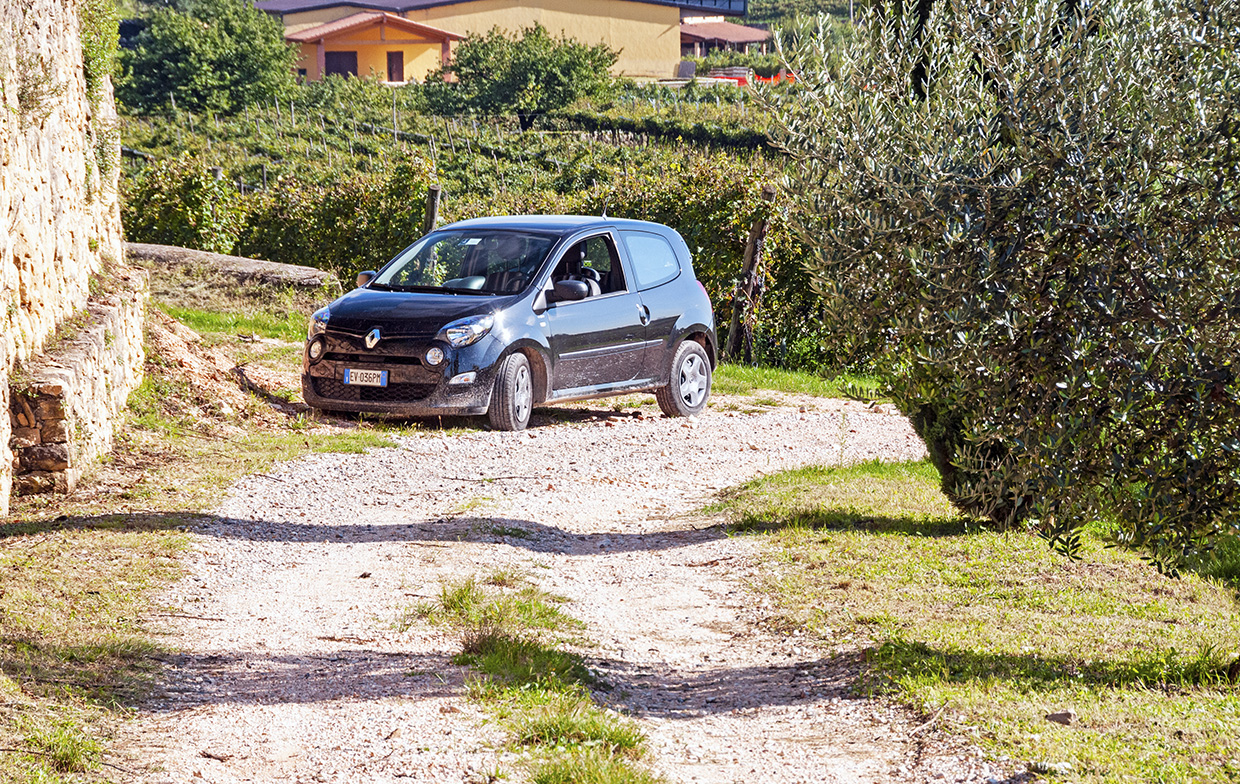
Widget not in any sidebars
#7 Don’t get suckered into an upgrade
Renting a car in Europe, a small car, means that the more than likely the car rental company personnel will try to upgrade you when you pick up the car — like the folks I mentioned in tip #1.
Don’t do it!
Just say NO!
Seriously, you need to stick with the smallest car you can as it will be better for driving on those narrower roads, save you money and lend itself to easier parking.
Now, there are times when a bigger car or something like an SUV is the right option — such as going to more off road, mountainous spots or if you are going to be hauling some gear like skis or camping equipment.
Or if you’re renting a car in Europe in winter.
But chances are you don’t need the upgrade.
PS The upgrade will cost you more!
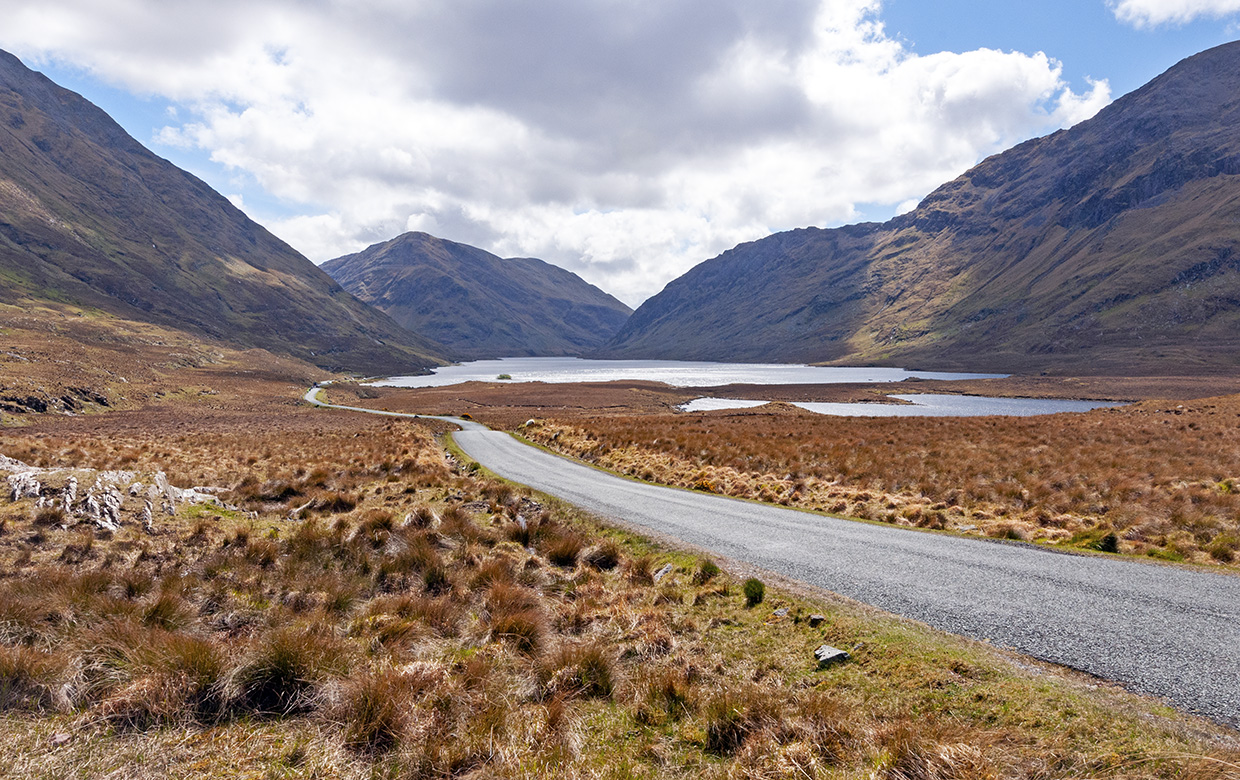
#8 Are you visiting more than 1 country?
You do need to let them know when you book the car.
There can be some stipulations around renting in 1 country and taking it into another.
So be honest as you could end up with fine.
For example, on my 2019 trip, I started and ended my trip in Italy.
But I traveled to Croatia and Slovenia.
As I filled out the car rental booking information I was honest and let them know I would be in those 2 countries.
And it was all fine.
Even if you’re not sure, it is best to be on the safe side and put any possible countries you may take the car.
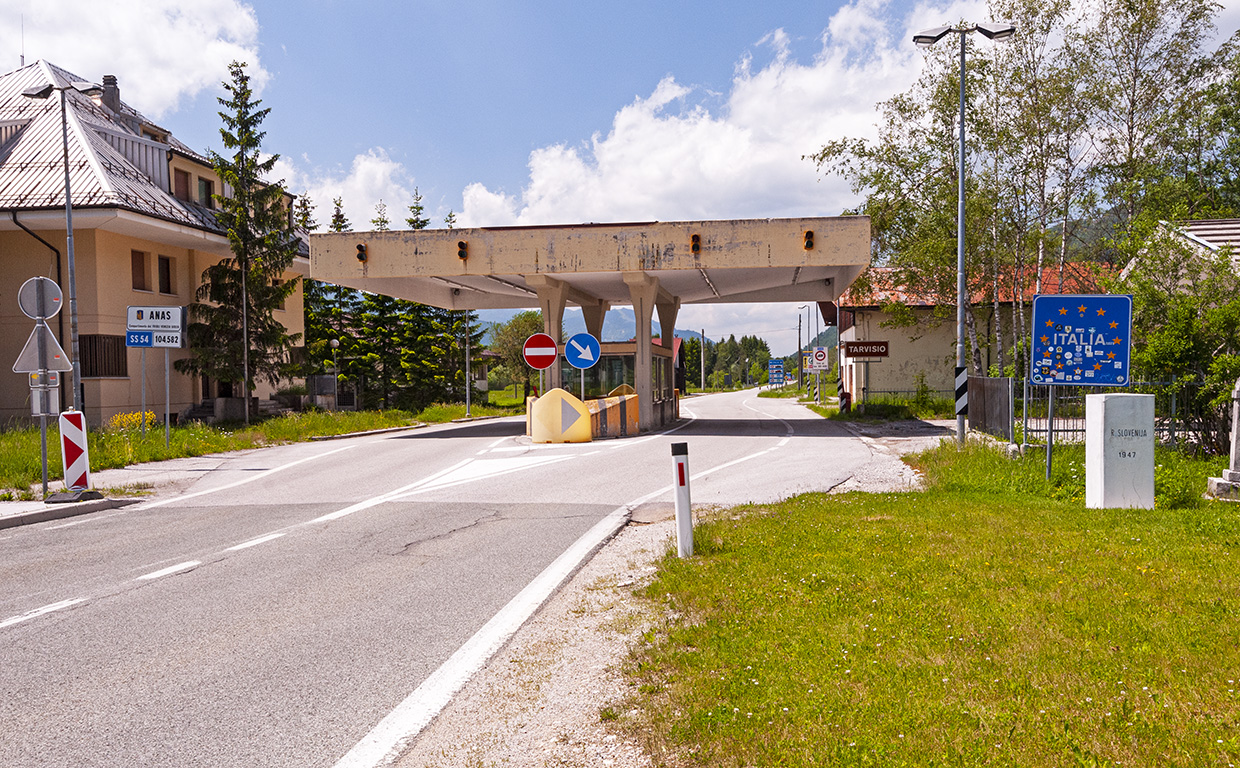
#9 Be sure to rent from a reputable company
Renting a car in Europe may mean using companies you may not be familiar with.
And this may be ok.
Yes, you can rent from companies like Hertz, Budget, Enterprise, Avis or Europcar.
But there are other smaller companies, even local ones, that are okay to rent with.
I’ve rented cars from Hertz, Enterprise and Europcar.
But I also rented a car in Scotland from a smaller, local company called Focus that had great prices, amazing service and was simply an all around good experience.
And I hired a car from a local company called Bayfield in North Wales which was also a wonderful experience.
Just do a bit of research.
Read reviews.
You’ll know if you should rent from a smaller, locally owned company or if you are better off with one of the big guys.
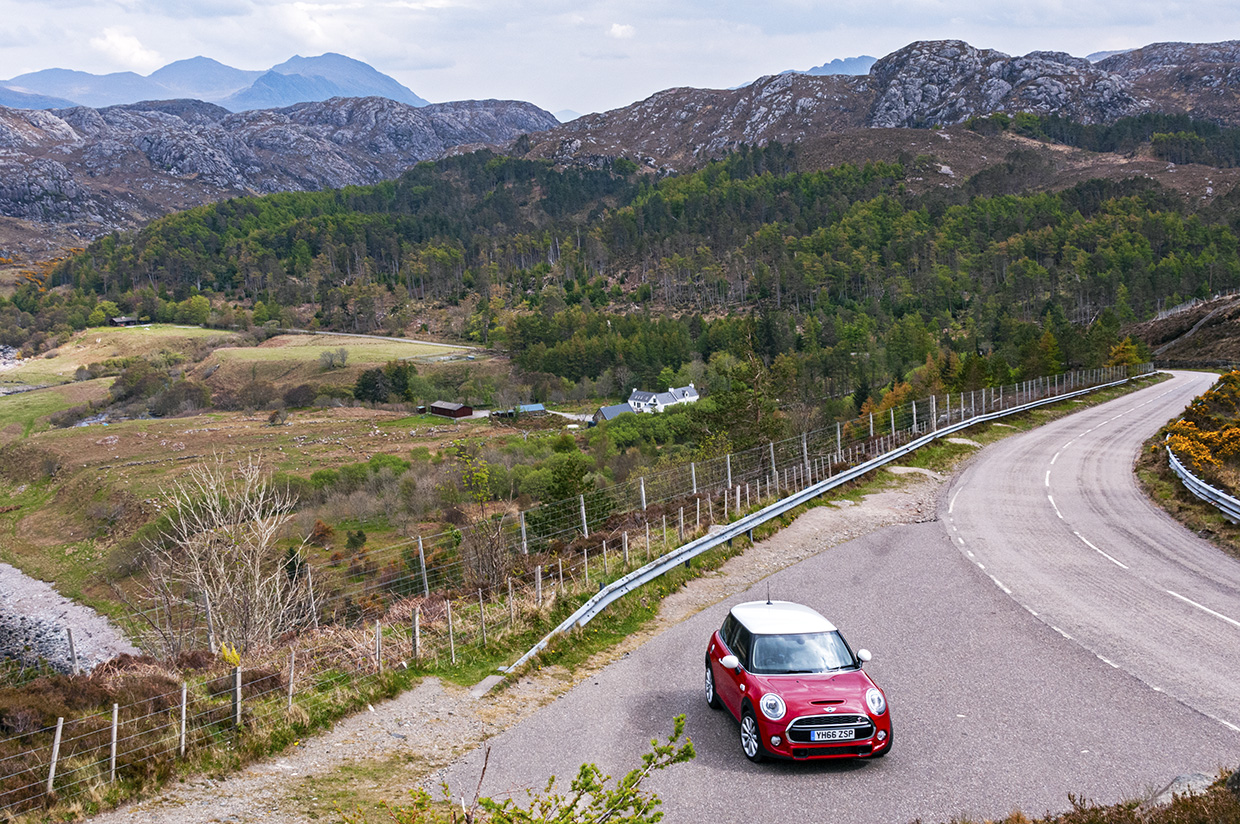
Final thoughts on renting a car in Europe
I’ve rented cars in Ireland, Scotland, Italy, Wales and Turkey and driven in Croatia and Slovenia.
I’ve never really had any issues renting a car.
Of course, I do my homework up front and make my bookings in advance.
I shop around a bit to find the best deal, but also I’m careful of hiring from reputable companies.
I always get insurance with zero deductible and add at least the windshield option on if possible.
Be sure to read over all the fine print.
Often there are some local taxes and minimal fees that will be added on.
And if you are renting a car where you’ll be dropping off at a different location than your pick up spot, you’ll typically be charged for that too.
If you’re still unsure about renting a car in Europe, then ask your favorite travel advisor (ME, ME!) for assistance.

Please note that Wander Your Way does not recommend international travel at this time due to the current global health situation with the COVID-19 pandemic. Although some countries are beginning to open, it is complicated.
If you do decide to travel internationally, please do your research or use a travel planning service such as Wander Your Way. Please stay up to date using official sources like the WHO and CDC.
I am continuing to write about incredible destinations and to offer tips on travel to Europe, so that you will find some solace in these posts — so you dream about travel and learn about places. And hopefully make that bucket list! This way when we can all fully travel again, you’ll be ready to go. For now, stay close to home and stay safe!
Disclaimer: This post contains affiliate links. This means I will earn a commission – at no extra cost to you — if you click on the link and purchase anything from these trusted companies. It helps Wander Your Way, a small business, stay in business. Thanks for your support!
Like it? Pin it!
